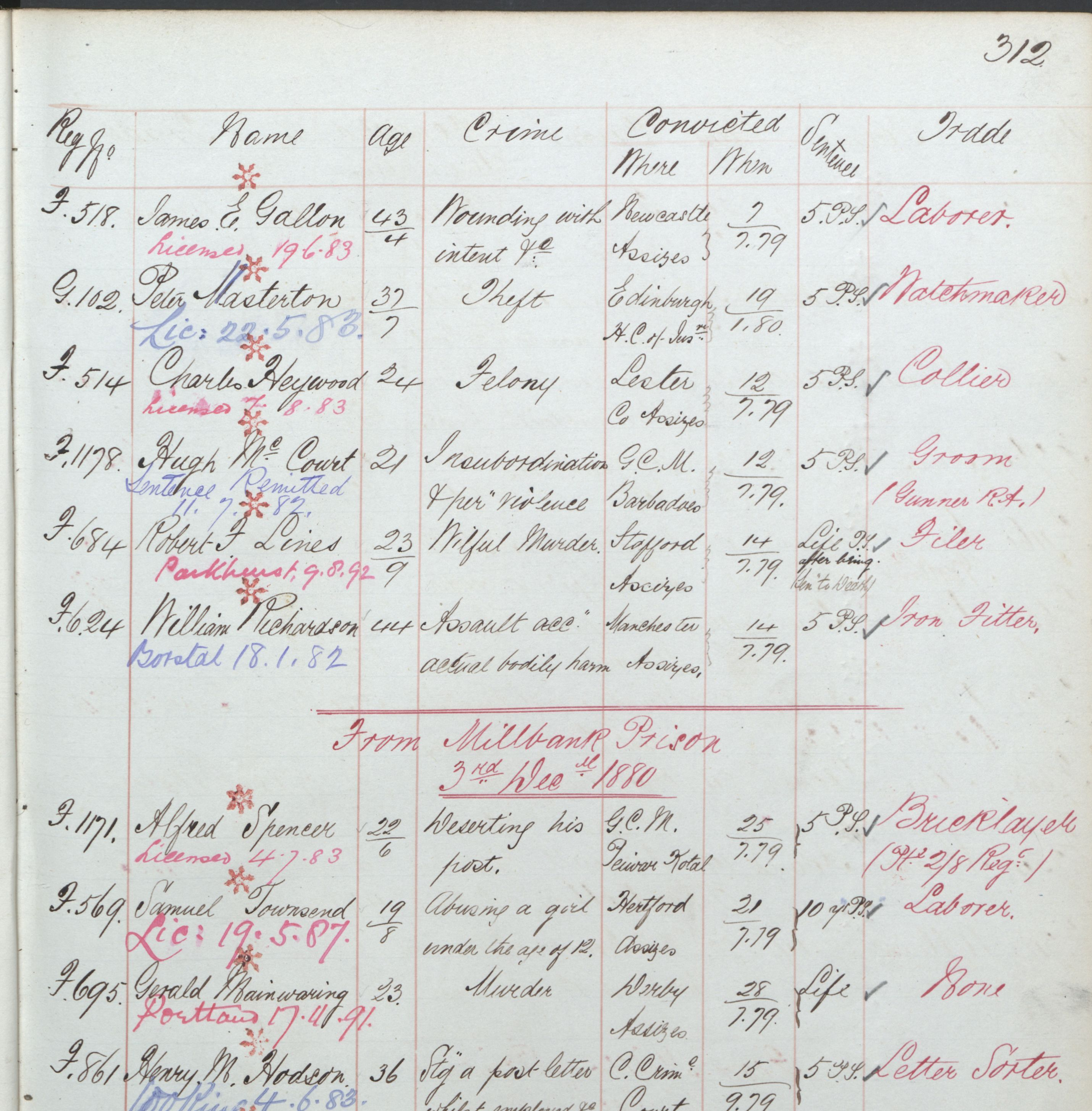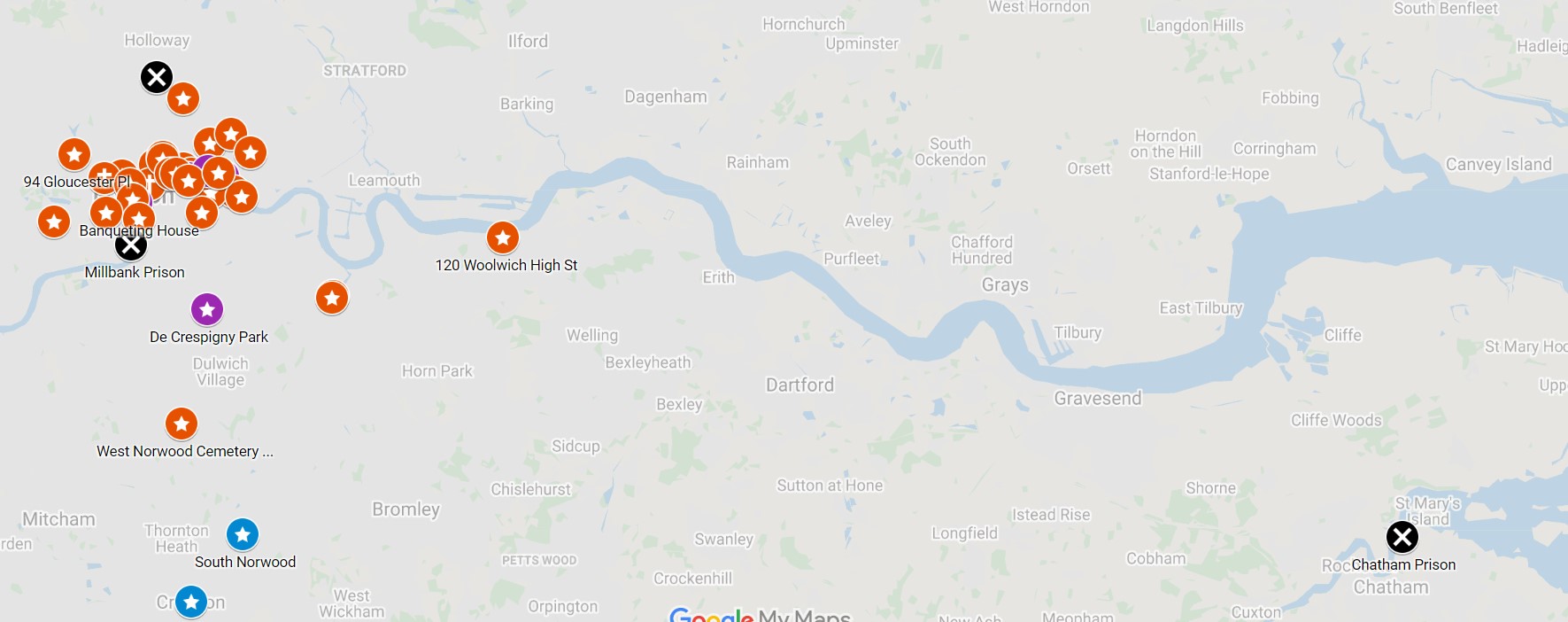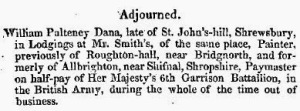My fourth great-grandparents Edward Hughes, a builder (1803 – 1876), and his wife Elizabeth Hughes née Jones (1798 – 1865) were Welsh; Edward was from Newmarket, Flintshire; Elizabeth from Cardiganshire. They were married in Liverpool in 1825. Of their eight children three survived to adulthood. One of these was their seventh child, my 3rd great grand-uncle Henry Hughes (1838–1907).
Henry Hughes was born in 1838 in Liverpool, Lancashire. At the time of the 1851 census he was 12 years old, at school in Shrewsbury.
A year later he emigrated to Australia with his family, arriving in 1852 aboard the “Fanny”. Edward Hughes was in business in Bendigo and in Melbourne as a builder.
From 1864, perhaps earlier, Henry worked for the Bank of New South Wales in Beechworth, Victoria.
Henry married Mary Hewitt (1837–1917) on 20 June 1864 in Brighton, Victoria. She was the oldest daughter of Joseph Jenkins Hewitt by Hewitt’s first marriage. Joseph Hewitt, widowed in 1847, had married Henry’s sister Mary in 1855.
From the Ovens and Murray Advertiser (Beechworth, Vic) 23 June 1864:
HUGHES - HEWITT. - On the 20th June, at Brighton, Mr Harry Hughes, of the Bank of New South Wales, Beechworth, to Mary, eldest daughter of J. L. Hewitt, Esq., Railway Department, Melbourne.
Henry and Mary Hughes had six children.

The Bank of New South Wales building on the corner of Camp and Ford streets in Beechworth, Victoria. It was constructed in the 1850s from a design by architects Robertson & Hale.
Inscription: Album inscribed at front “Early Beechworth Photos”. “The Bank of New South Wales, Beechworth” is written in ink on the back of the photograph.
Permission to reproduce the image granted by the University of Melbourne Archives, 2012.0011.00008
In April 1875 Henry Hughes and his manager Thomas William Bentley were abruptly dismissed. Bentley was accused of falsifying entries in the bank books; Henry was accused of concurring in the falsification of an entry.
The case came before the Court of Assizes held in Beechworth over four days from 12 to 15 October 1875 before his Honour Mr. Justice Barry.
The proceedings were summarised by the Australasian (Melbourne, Vic.), Saturday 16 October 1875, page 22:
BEECHWORTH, WEDNESDAY. At the assizes to-day T. W. Bentley was charged with making false entries in the books and documents of the Bank of New South Wales, Beechworth, in the account of William Hamilton. The court was crowded, and great interest was manifested in the case. The amount involved was over £3,000. The particulars of the case have already been reported. For the defence, Mr. Bowman urged that there was no fraudulent intent on the part of Bentley, who gained nothing by the transaction. In fact it was not shown that any one suffered. He admitted that Bentley wrongly and improperly used one man's account to make another's right. In the eager competition amongst the banks Bentley might have intended to show a large business, and make the accounts appear right on balancing day; but there was no evidence to show that the bank had suffered by the doubtful transaction. The returns were true entries from books. Prisoner might have used his position improperly, but unless the jury were satisfied that there was fraudulent intent, they could not find a verdict of guilty. The jury retired for twenty minutes, and returned with a verdict of guilty on all the counts. Prisoner was removed to gaol. There are other cases against the prisoner to be proceeded with. BEECHWORTH, Thursday. H. Hughes, charged with making a false entry in the books of the Bank of New South Wales, Beechworth, in the account of Robert G. Keyle, was found guilty and recommended to mercy. T.W. Bentley pleaded guilty to two charges of omitting to place the proceeds of two bills of exchange to the credit of J. H. Gray and Co., and of improperly negotiating certain bills of exchange entrusted to him for specific purposes. H. Hughes pleaded guilty to concurring in making a false entry in the bank-books, re the payment of £800 to Cyrus E. Smith. … Thomas W. Bentley, late manager of the Bank Of New South Wales, was brought up for sentence. Mr. Justice Barry delivered an impressive and severe address. He thought Bentley's high position and the esteem in which he was held by the bank an aggravation of the offence. He had not only himself been guilty of a series of frauds, but he had been instrumental in seducing Hughes. He found that in the cases which had been heard the bank had lost considerably. The act under which Bentley was tried had been recently introduced to meet what unfortunately was an increasing vice namely, breach of trust. He had heard the first case brought under the act, and had not inflicted a heavy sentence, it being the first case of the kind, and this was his usual custom. But in this case, considering the magnitude of the sums involved, the position the prisoner occupied, and the expedients resorted to, which aggravated the offence, he should pass a heavy sentence. For the first case the sentence would be five years' imprisonment; for the second, 15 months; and for the third, 18 months, the sentences to be cumulative. H. Hughes was sentenced to 18 months' imprisonment on the first charge and two years on the second, the judge remarking that he felt a difficulty in dealing with this case, as he could not discover how the prisoner had been actuated or influenced.
T.W. Bentley and Henry Hughes were imprisoned first in Beechworth and then in Pentridge gaol.

Henry Hughes Prisoner number: 13287; Volume: 22; Page: 420
Henry was discharged from Pentridge Gaol in August 1878 after serving 18 months for making a false entry in a bank book and concurring in making a false entry. At the time of his discharge from gaol he was described as native of Liverpool, trade bank clerk, born 1838, height 5′ 7 1/4″.
Thomas William Bentley had come from a distinguished banking family. His grandfather was Principal of the Accountants’ office in the Bank of England. His father had been Secretary to the Bank of England, and he had started his career there before his emigration to Victoria in 1860. Bentley was held in great esteem by the people of Beechworth, who mounted a petition for his early release. In response to the petition the Governor granted a mitigation of the sentence, and Bentley was released in 1878.
When Bentley died in 1884 the obituary in the Beechworth newspaper indicated he was remembered fondly despite the fraud episode. From the Ovens and Murray Advertiser, Tuesday 19 August 1884, page 2:
Death of a Late Bank Manager. — We regret to learn, by telegram, of the death of Mr T. W. Bentley, who nine years ago, and for several years previously, occupied the position of manager of the Bank of New South Wales at Beechworth, where he was very popular, as he identified himself prominently with public movements, until trouble overtook him. Prior to coming to Beechworth he was manager of the Kyneton branch of the same bank. He has for some time past been residing at South Yarra, and died there on Sunday afternoon, His remains will be interred in the cemetery at that place this (Tuesday) afternoon. The deceased gentleman had nearly reached the allotted Biblical age of three score years and ten. Much sympathy is expressed for Mrs Bentley in her bereavement.
I have not found any records revealing Henry’s career after his release from prison. On the electoral rolls of 1903 and 1905 his occupation was given as accountant.
Henry Hughes died on 4 May 1907 in Toorak, Victoria, at the age of 68, and was buried in Brighton General Cemetery, Victoria.
From The Argus of 11 May 1907 and The Prahran Telegraph 18 May 1907:
HUGHES.— On the 4th May, at his residence, 'Rothely’, Cunningham-road, Toorak, Harry Hughes, late of Beechworth, beloved husband of Mary Hughes, in his 69th year.
Related posts
- Y not Y?
- F is for Flintshire
- The unfortunate death of Goodman Hughes (Henry’s brother)
Wikitree:




























